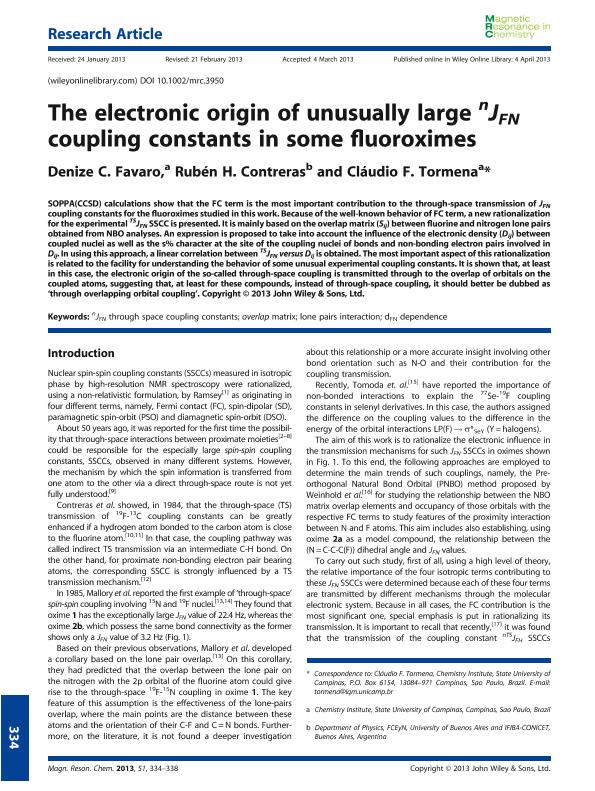Artículo
The electronic origin of unusually large nJFN coupling constants in some Fluoroximes
Fecha de publicación:
04/04/2013
Editorial:
John Wiley & Sons Ltd
Revista:
Magnetic Resonance in Chemistry
ISSN:
0749-1581
Idioma:
Inglés
Tipo de recurso:
Artículo publicado
Clasificación temática:
Resumen
SOPPA(CCSD) calculations show that the FC term is the most important contribution to the through-space transmission of JFN coupling constants for the fluoroximes studied in this work. Because of the well-known behavior of FC term, a new rationalization for the experimental TSJFN SSCC is presented. It is mainly based on the overlap matrix (Sij) between fluorine and nitrogen lone pairs obtained from NBO analyses. An expression is proposed to take into account the influence of the electronic density (Dij) between coupled nuclei as well as the s% character at the site of the coupling nuclei of bonds and non-bonding electron pairs involved in Dij. In using this approach, a linear correlation between TSJFN versus Dij is obtained. The most important aspect of this rationalization is related to the facility for understanding the behavior of some unusual experimental coupling constants. It is shown that, at least in this case, the electronic origin of the so-called through-space coupling is transmitted through to the overlap of orbitals on the coupled atoms, suggesting that, at least for these compounds, instead of through-space coupling, it should better be dubbed as ‘through overlapping orbital coupling’.
Archivos asociados
Licencia
Identificadores
Colecciones
Articulos(IFIBA)
Articulos de INST.DE FISICA DE BUENOS AIRES
Articulos de INST.DE FISICA DE BUENOS AIRES
Articulos(OCA CIUDAD UNIVERSITARIA)
Articulos de OFICINA DE COORDINACION ADMINISTRATIVA CIUDAD UNIVERSITARIA
Articulos de OFICINA DE COORDINACION ADMINISTRATIVA CIUDAD UNIVERSITARIA
Citación
Favaro, Denize C.; Contreras, Ruben Horacio; Tormena, Claudio F.; The electronic origin of unusually large nJFN coupling constants in some Fluoroximes; John Wiley & Sons Ltd; Magnetic Resonance in Chemistry; 51; 6; 4-4-2013; 334-338
Compartir
Altmétricas




